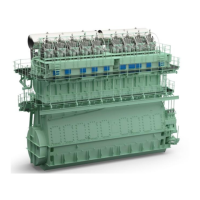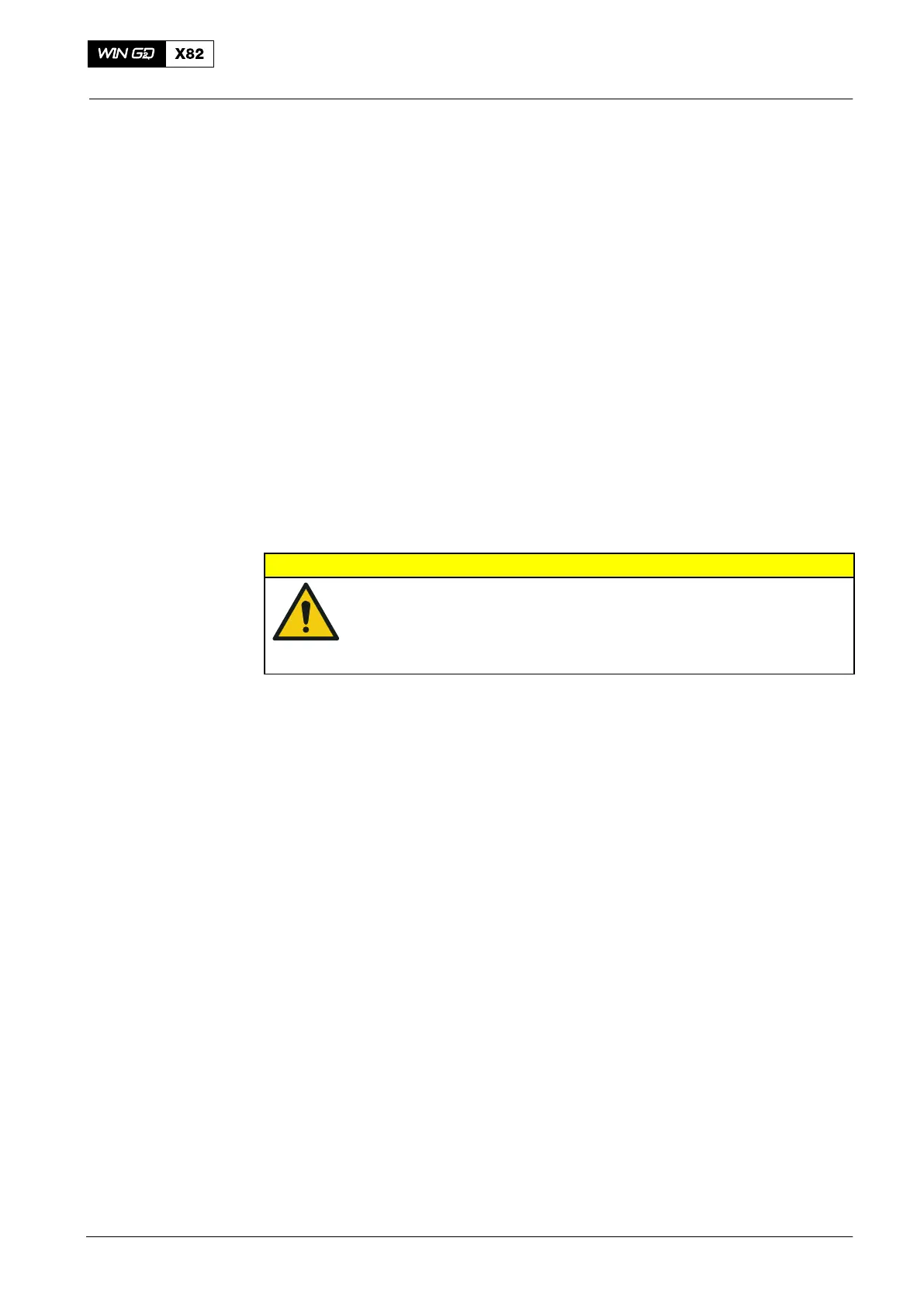Operation
8017−1/A1
Winterthur Gas & Diesel Ltd.
1/ 4
Cooling Water System
1. General
The schematic diagram (see Fig. 1) shows the cylinder cooling water system on the
engine.
Fig. 2 shows a schematic diagram of the Scavenge Air Cooler (SAC) cooling water.
The location of pumps, coolers, fresh water generator, heater, expansion tank, valves
and throttling discs for flow control etc. are found in the separate documentation for
the plant layout (shipyard side). Also the layouts of raw water for the scavenge air,
lubricating oil and jacket cooling water coolers are shown in the layout diagram.
The cooling water system is a closed circuit and connected to an expansion tank in
the plant. The cooling water, keeps cool the cylinder liners, cylinder covers and
exhaust valve cages.
The cooling water must be treated with an approved inhibitor to prevent corrosive
attack, sludge formation and scale deposits in the system (see 0760-1 Cooling
Water / Cooling Water Treatment).
A heater installed in the plant, heats the water to the correct temperature before
engine operation.
CAUTION
Damage Hazard: If the engine is out of operation for a long period
in cold/frosty conditions, you must drain the cooling water
system. The water is chemically treated and you must
decontaminate the water in accordance with local environmental
regulations.
For data about antifreeze, see 0760-1 Cooling Water / Cooling Water Treatment.
1.1 Automatic Temperature Control − Cooling Water
The temperature of the cooling water outlet is kept as stable as possible during all
load conditions. This prevents too much expansion and contraction of the combustion
chamber components e.g. cylinder liners and cylinder covers.
The maximum permitted temperature tolerances are:
D ±2_C at constant load
D ±4_C during load changes (transient conditions)
For data about pressures, temperature ranges, alarm and safety setting points, see
the Operating Data Sheets 0250−1 and 0250−2.
2014

